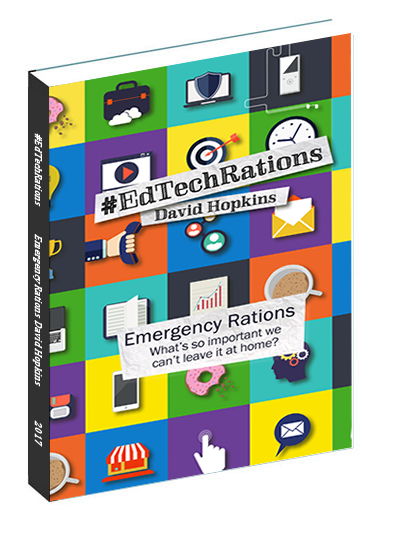The rise of human-computer co-operation #edtech
As technology becomes more ingrained into our daily lives, and our reliance on it for tasks and information increases, so the competition of ‘man vs. machine’ debate hots up. However, Shyam Sankar looks not at this future not as ‘man vs. machine’ but man + machine’:
YouTube: The rise of human-computer cooperation
“Isn’t it supposed to be about man vs machine? Instead it’s about co-operation, and the right type of co-operation. We’ve been paying a lot of attention to Marvin Minsky‘s vision for Artificial Intelligence over the last 50 years. It’s a sexy vision for sure, many have embraced it, it has become the dominant school of thought in computer science. But as we enter the era of Big Data, of networked systems, of open platforms and embedded technology, I’d like to suggest it’s about time to re-evaluate an alternative vision that was developed around the same time – I’m talking about JCR Licklider’s human-computer symbiosis, perhaps better termed Intelligence Augmentation … his vision was to enable man and machine to co-operate in making decisions, in controlling complex situations, without the inflexible dependence on predetermined programmes.”
“The more you look around you the more you see Licklider’s vision everywhere: whether it’s augmented reality in your iPhone, GPS in your car, our human-computer symbiosis is making us more capable. So if you want to improve human-computer symbiosis what can you do? You can start by designing the human into the process. Instead of thinking about what a computer will do to solve the problem, design the solution around what the human will do as well.”
What’s this to do with learning, or education? Simple … if we can work out a way to co-operate with the computational capabilities of computing devices (mobile, desktop, etc.) in a way to enhance our learning need can we increase our learning capacity? This is obvious in areas where large-scale computations are needed, but can this be used for classroom use? We already ask students to collaborate with each other, why not collaborate with the computer – not just use it as a tool, but use it as a team member?
A bit far fetched .. .maybe, but for how long?


















Yes, technology can certainly increase learning capacity, but only if it’s done correctly. When you introduce a new technology to a classroom, students and teachers should be using the technology to communicate, rather than letting the tech do the teaching.
Hi Julien – I agree with you here, but let’s not forget that this isn’t just about ‘new’ technology, it’s about technology in general, yes? While something may be new to the classroom it could be a well established device in the lives of the student – take the mobile phone or tablet for instance: students have used or had access to one of these for a while, even several years, outside of the classroom so they are already extremely well versed in how to use it. They just haven’t been allowed to use it at school or in the classroom before.
All the best, David
Technology is very useful especially in the field of education as we can access and search certain information we need for a short period of time, but it is still more preferable to have human teachers who will teach student. Teaching should have harmony and feelings though technology can greatly help especially in illustrations.
Hi Dale .. “Teaching should have harmony and feelings though technology” +1.
All the best, David
A bit far fetched? I’d say not at all.
We already have wearable computers and augmented reality, which I would argue are rendering m-learning more human centered.
I love the term “Intelligence Augmentation”. If we can avoid the Google Effect, we can really make this work for us.
Lets hope we can avoid any one ‘owner’ of the technology or the market. That way development and advances can be open and even?